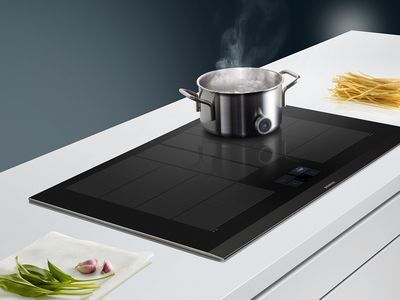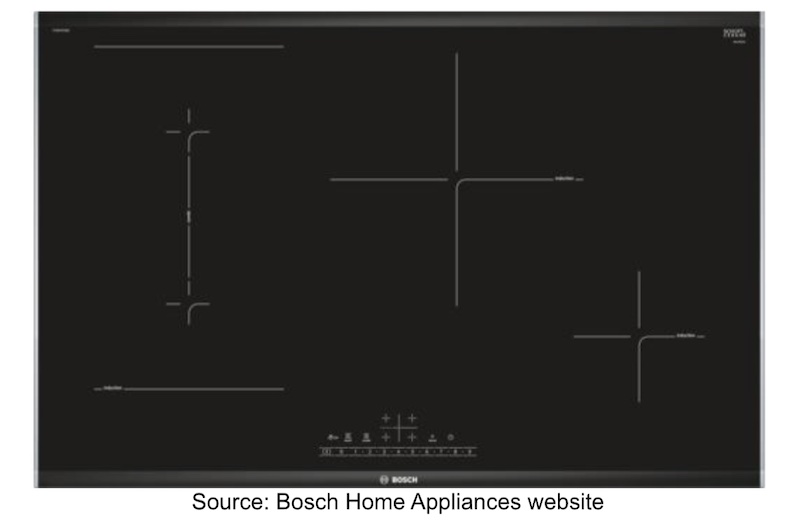
You don’t have to go far to find a layperson, salesperson, or even sometimes an electrician who will tell you that an induction cooktop will need a new 32 amp circuit and maybe even a three-phase upgrade as part of its installation.
Online forums are full of people repeating this, and it may be putting people off moving to induction cooking. What is contained in this article may be news to many consumers, but it should not be news to electricians.
By sizing the circuit for a new induction cooktop correctly, it may be possible to re-use an existing circuit in your kitchen without any upgrading. If a gas cooktop is being replaced with an induction cooktop, a new circuit will of course be required, but it may be possible to use smaller gauge cable which is cheaper and easier to work with.
Cooktop load diversity
Going back to the earliest edition of the wiring rules I could find, Australian Standard 3000 (AS3000) has since at least 1976 included a recommended maximum demand for cooktops (or, as they were referred to back then, “hotplates”).
These recommendations appear in Table C5. While not mandatory, this table can used for sizing the cables and circuit breaker for the cooktop circuit. The maximum demand for the appliance is calculated by considering what is known as “load diversity”.
In plain English, this means that a cooktop having a number of different cooking elements and a range of power levels will almost never have all of the elements operating at full power (which is the full-load rating).
In practice, you might use one element on full power and a couple of others on lower settings, or you might have all elements running but at varied power levels.
Consequently, it is possible to economise on cabling by using the assessed maximum demand figures from Table C5.
It should be emphasised that it’s not technically wrong to install cabling to cover the full-load rating of the cooktop, but it’s more expensive and largely unnecessary.
What happens, then, if the circuit is installed according to the Table C5 recommendations and you then use all of your cooktop elements at maximum power?
The circuit breaker will trip to protect the wiring, but circuit breakers don’t trip exactly at their rated current. They permit moderate overloading for a short time before eventually tripping (and will trip faster for larger overloads).
For example, if the cooktop runs at 1.45 times the rating of the circuit breaker, the circuit breaker will trip after one hour. Most meals are prepared in less time than this and without maximum power for the full duration.
Induction cooktops
An induction cooktop usually has between two and five zones with different maximum power ratings. Some zones are bridged together so that the power is shared between the zones. Other zones may have a “boost” function that gives more than the maximum power for a short time.
Even the manufacturers understand that running all zones at full power is very uncommon, which is why features like bridged zones exist.
The specifications for any induction cooktop will include a “connected load” figure in watts (or kilowatts). It can be a bit confusing to find that the total power of all of the zones exceeds the connected load figure in the specifications.
This is because an induction cooktop manages the power internally to never exceed the connected load figure. If you look at the specifications for a cheaper, solid element electric cooktop, you are more likely to find that the sum of the power ratings for all of the elements will equal the connected load figure as there is nothing clever going on.
By way of example, let’s pick two induction cooktops on the market and take a closer look.
Example 1: IKEA VÄLBILDAD
This two-zone IKEA cooktop has a boost function for both zones, but the boost can only be used on one zone at a time.
Total connected load according to the manual: 3700 W
At 230V, this cooktop pulls about 16 amp (3700W divided by 230V). According to Table C5, the assessed maximum demand of this cooktop (that is, for anything less than 5000 W) is also 16 amp. So in this case, the assessed maximum demand is the same as the full-load rating due to the small size of the cooktop. This makes sense – you are very likely to use both zones on this cooktop at the same time.
Example 2: Bosch PVS875FB5E 80cm Serie 6 Induction Cooktop
According to the specifications, this Bosch cooktop has a connected load of 7.4 kW.
The Bosch cooktop pulls a maximum of 32 amp (7400 W divided by 230V). According to Table C5, though, the full-load rating of this appliance lies between 5 kW and 8 kW, so it has an assessed maximum demand of 20 amp – a 40% reduction. This means that an existing circuit might be available to be re-used, saving considerable installation cost.
Conclusion
This article has not discussed the requirement (or lack thereof) for a 3-phase supply. This topic was well covered in an AFR article in April by Tristan Edis (subscription required). This is a great read if you’re interested in avoiding unnecessary 3-phase upgrades.
Hopefully this helps explain the installation requirements for any induction cooktop you’re considering. If you suspect your cooktop is triggering an expensive installation, ask your electrician if they are following Table C5. After all, cooktop diversity has only been in the standard for 50 years!
Ben Elliston undertook step-by-step electrification of his house between 2007 and 2017 and was delighted when Jemena capped off his gas line. He thanks electricians Mark Hemmingsen and Ben Murphy for reviewing this article.
For more explainers and podcasts about home electrification, visit RenewEconomy’s SwitchedOn.




